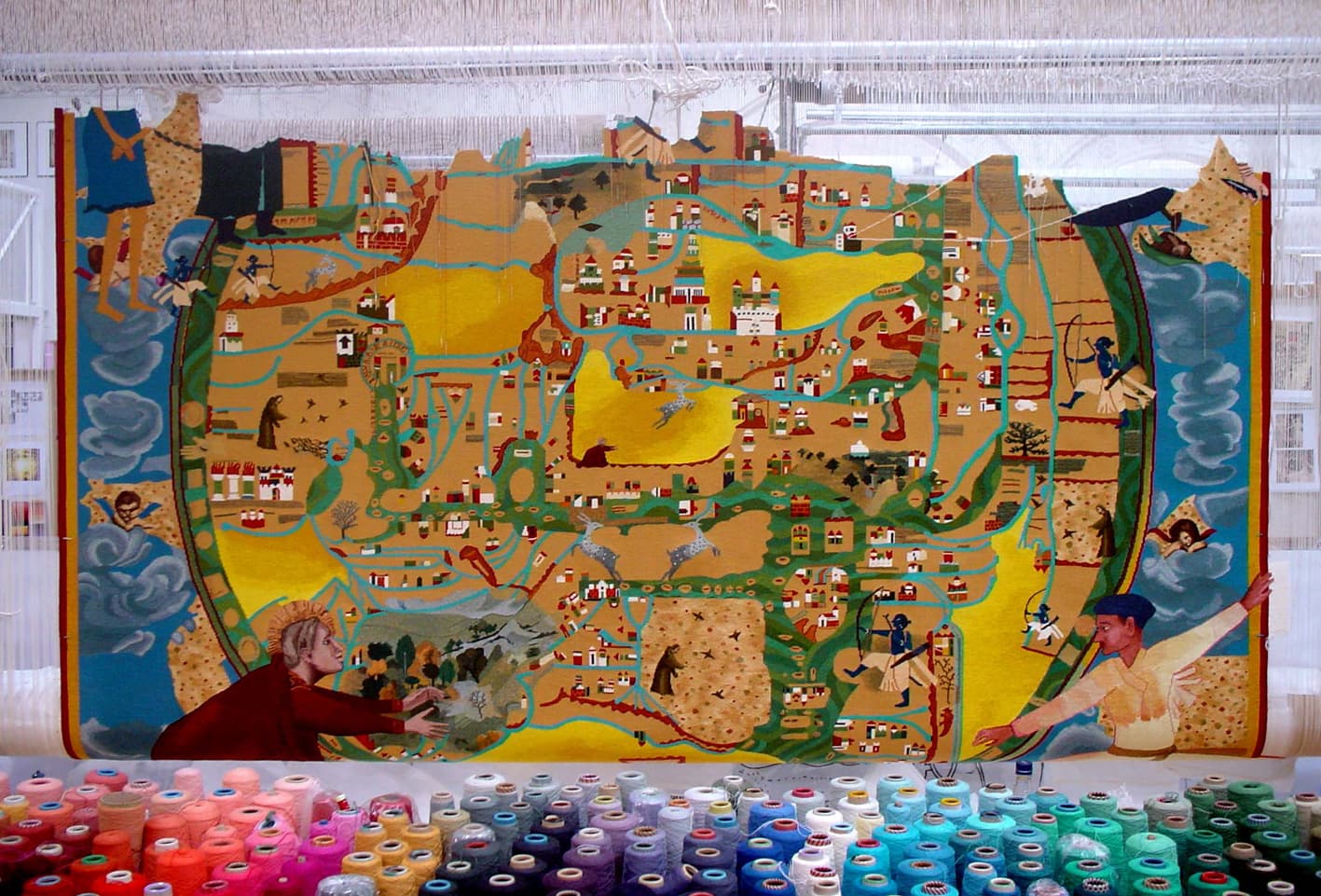


In 2004 the ATW wove Gulammohammed Sheikh’s Mappamundi — a design composed from a melting pot of Eastern and Western history, juxtaposed on an image of a map— visual components that are now synonymous with Sheikh’s wider practice.
Sheikh’s fascination for painted maps was triggered by a picture postcard he found in the British Library bookshop of a 13th-century map of the world, known as the Ebstorf Mappamundi. When Sheikh learned that the original parchment map was destroyed during the allied bombing in World War II, he used the image as inspiration for making his own world maps. Over five years Sheikh created approximately 15 versions of Mappamundi, each a celebration of Eastern and Western culture, history and contemporary events. His Mappamundis& feature stylistic influences, ranging from Ambrogio Lorenzetti and Piero della Francesca to Mughal painting, and contain a medley of Hindu and Muslim references to religious ritual, family customs, Indian village life and contemporary events, such as the destruction of the Bamyam Buddha in Afghanistan. The Mappamundi tapestry depicts the map framed in each corner by the symbolic figures of Mary Magdalene reaching out to Christ, Kabir weaving the shroud, Rama chasing elusive deer and a mad mystic, dancing. By an uncanny coincidence, the dimensions of the finished tapestry resemble those of the original, lost Ebstorf Mappamundi.
Gulammohammed Sheikh has exhibited widely in major international institutions.